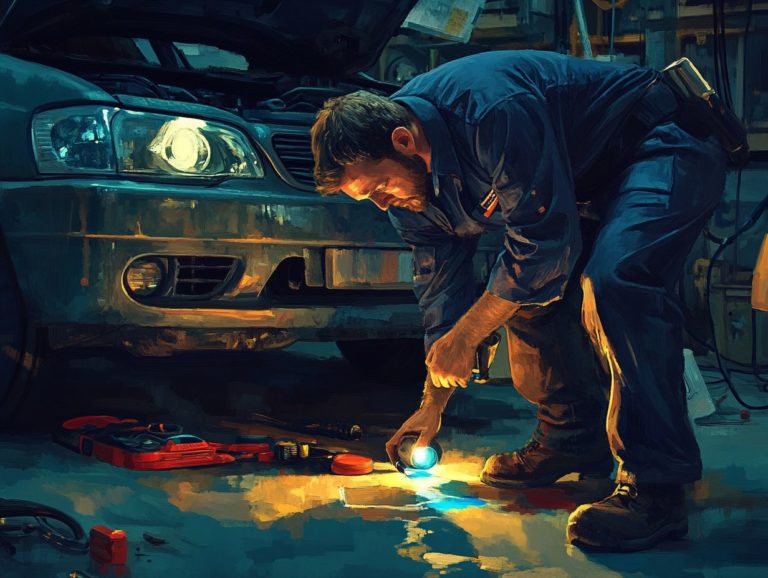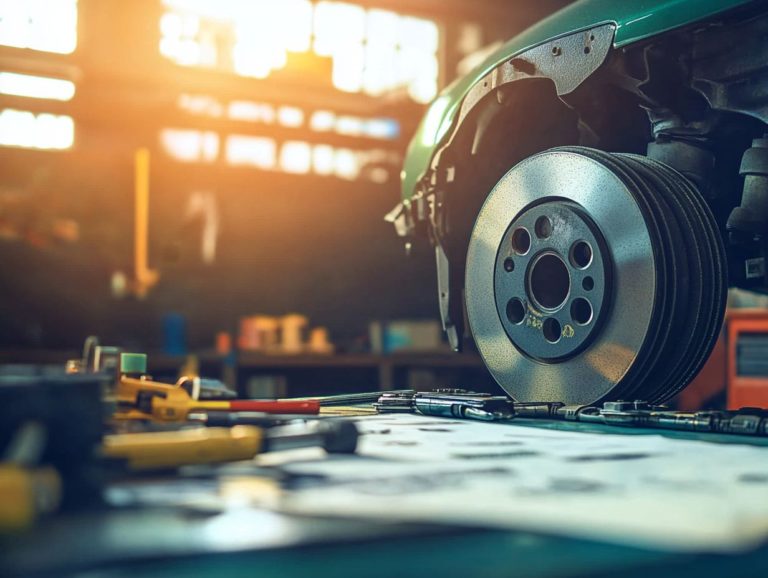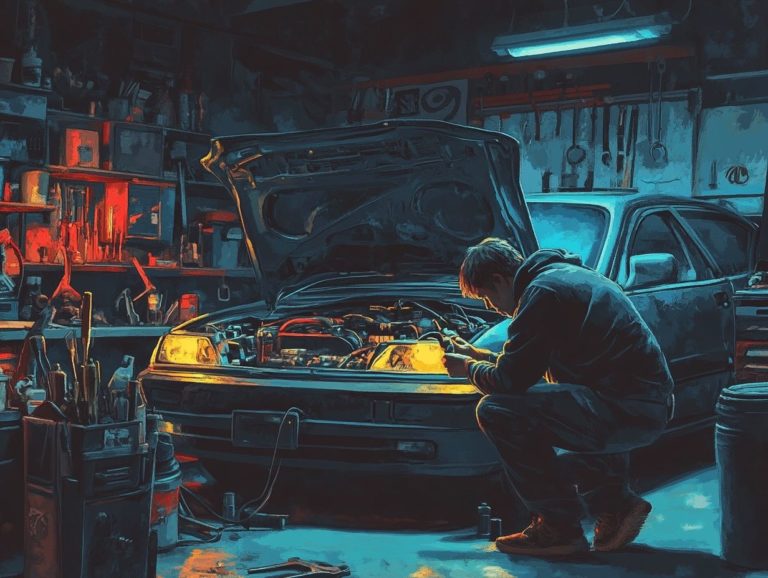The Most Common Reasons for Check Engine Light
The check engine light can often evoke a sense of dread for drivers, signaling potential issues lurking beneath the surface of their vehicle. Don’t ignore the check engine light! It could save you from costly repairs down the road.
Understanding the significance of this warning light and knowing how to respond is essential for preserving your car’s health. This article delves into the common culprits that trigger the check engine light, including malfunctioning sensors and ignition troubles. It also covers effective diagnostic techniques and preventive measures to keep your car running smoothly.
Contents
- Key Takeaways:
- Understanding the Check Engine Light
- Common Causes of the Check Engine Light
- Preventive Measures to Avoid the Check Engine Light
- Frequently Asked Questions
- What are the most common reasons for the check engine light to turn on?
- How can a loose gas cap cause the check engine light to turn on?
- Why is a faulty oxygen sensor a common cause of the check engine light turning on?
- What are some signs of catalytic converter issues that may trigger the check engine light?
- Can a malfunctioning mass air flow sensor cause the check engine light to turn on?
- What should I do if the check engine light turns on?
Key Takeaways:
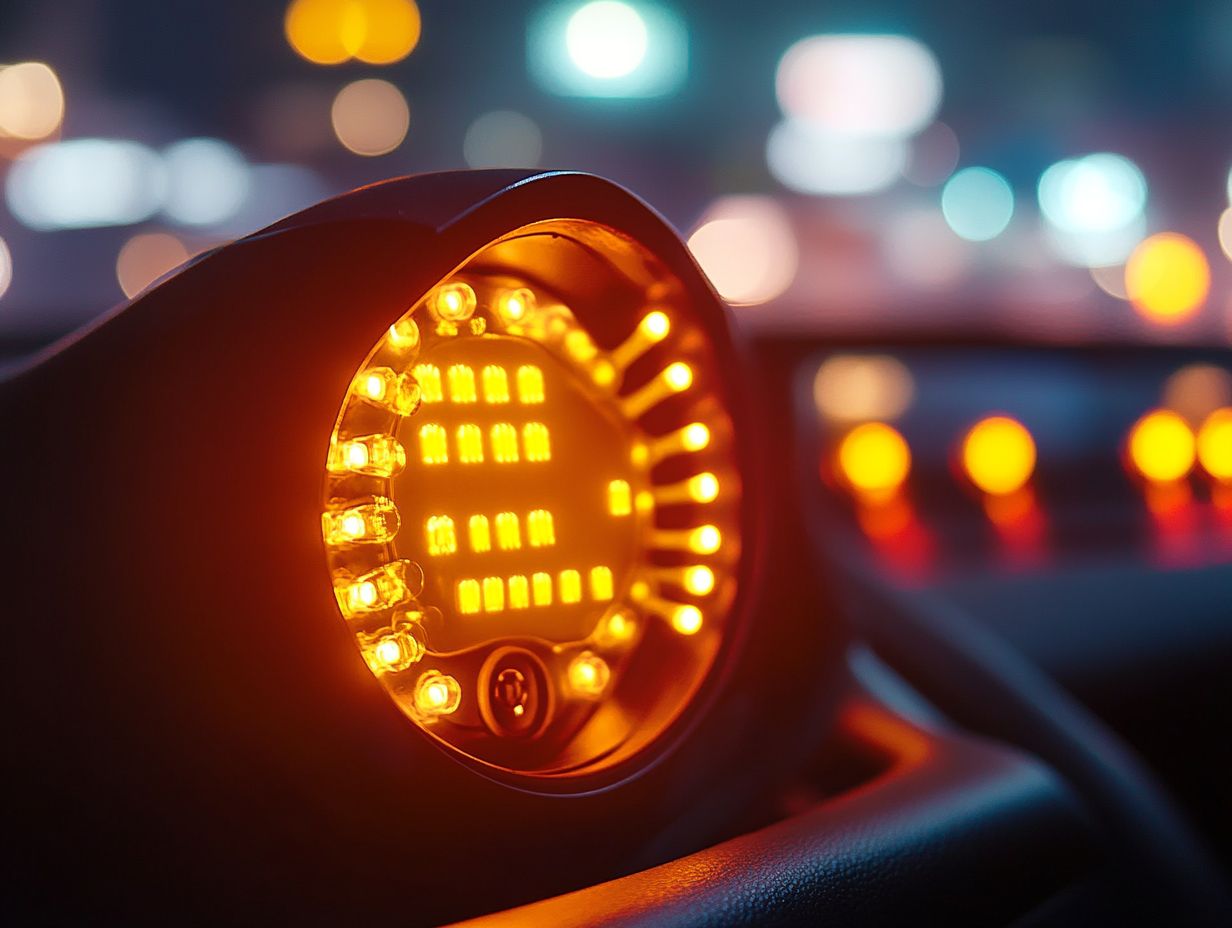
- Ignoring the check engine light can lead to costly repairs in the long run.
- Common causes include faulty oxygen sensors, gas caps, catalytic converters, and ignition coils.
- Regular vehicle maintenance and proper gas cap usage can help prevent the check engine light from turning on.
Understanding the Check Engine Light
The Check Engine Light serves as a vital signal regarding your vehicle’s health. It illuminates when there’s a concern within the engine control unit (ECU) or its associated systems. It can indicate a range of issues, from emissions problems to sensor malfunctions, or even something as simple as a loose gas cap.
Grasping the significance of this warning and knowing how to respond can significantly enhance your engine’s performance and prevent further complications. Therefore, it s essential to seek professional inspections and repair services from trustworthy auto shops like Hometown Chrysler in Albion, MI.
What is the Check Engine Light?
The Check Engine Light on your dashboard serves as a vital alert, pointing to potential issues with your vehicle’s engine or fuel system. It’s often triggered by the engine control unit detecting anomalies.
This important warning can be set off by a range of problems, from something as simple as a loose gas cap to more serious matters such as a malfunctioning catalytic converter or oxygen sensor. When this light comes on, it’s crucial for you to respond quickly. It indicates that your engine management system has detected an irregularity that could lead to diminished performance or increased emissions.
By seeking timely diagnostics, you can identify the root cause of the issue. This ensures that regular maintenance is performed and prevents future complications. Ignoring the Check Engine Light could result in costly repairs and decreased vehicle efficiency, underscoring its significance in maintaining your vehicle’s overall health.
Common Causes of the Check Engine Light
Numerous common culprits can trigger the Check Engine Light, ranging from minor annoyances like a loose gas cap to more significant concerns involving critical components. Issues with the oxygen sensor, catalytic converter, or ignition coils can profoundly impact both engine performance and emissions.
It’s essential to address these triggers promptly to ensure your vehicle runs smoothly and efficiently.
Malfunctioning Oxygen Sensor
A malfunctioning oxygen sensor can severely impact your engine’s performance and lead to increased emissions. This component is essential for monitoring the fuel-to-air ratio in your engine.
This vital sensor provides real-time feedback to the engine control unit (ECU), enabling it to make necessary adjustments for optimal combustion. When the sensor is faulty, the ECU faces challenges in maintaining that ideal balance, often resulting in sluggish acceleration and reduced fuel efficiency. Additionally, heightened emissions can contribute to environmental harm and may even cause your vehicle to fail emissions tests.
To stay ahead of potential issues, regular diagnostic checks such as scanning for error codes and visually inspecting the sensor are invaluable. Routine maintenance services, including oxygen sensor testing, are crucial for ensuring your engine runs efficiently and remains compliant with emissions regulations.
Loose or Damaged Gas Cap
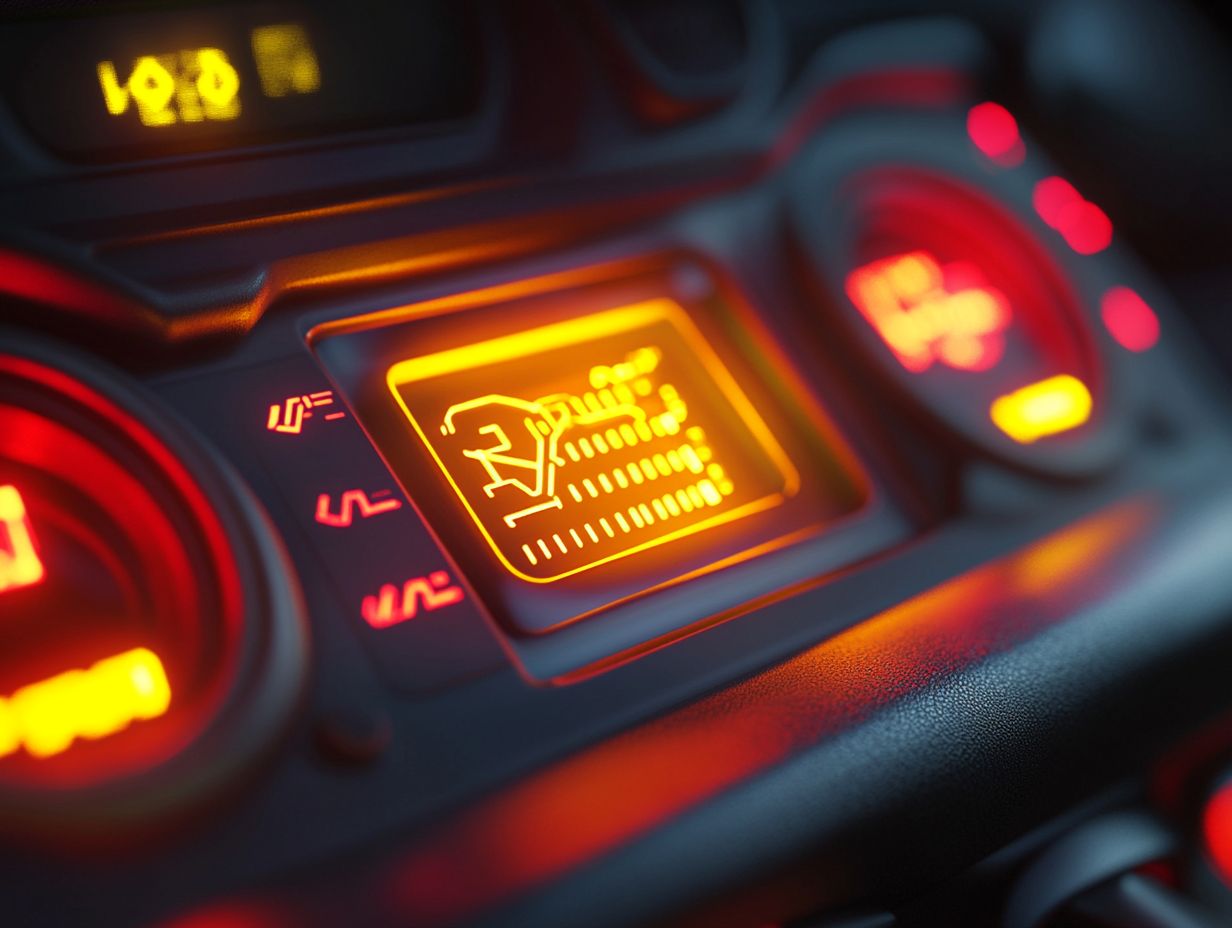
A loose or damaged gas cap can easily trigger your Check Engine Light. It can create a gap that lets air in, which decreases fuel efficiency and increases emissions.
What may seem like a minor annoyance can quickly escalate into serious performance problems for your vehicle. Check your gas cap regularly to ensure it maintains a tight seal. This prevents fuel vapors from escaping and allows your car s fuel system to operate at peak efficiency.
Neglecting this crucial component can lead to expensive repairs. Your engine may struggle to compensate for the lost pressure, ultimately affecting the longevity of your vehicle. Regularly checking the gas cap not only helps your car perform better but also reduces environmental pollution, making those routine checks essential for your wallet and the planet.
Faulty Catalytic Converter
A faulty catalytic converter is a significant concern that can turn on your Check Engine Light. It plays a crucial role in reducing harmful emissions and ensuring your engine runs well.
When this essential component begins to fail, you might notice symptoms like decreased fuel efficiency, odd noises from the engine, and a frustrating drop in power when accelerating. A compromised catalytic converter can lead to increased emissions, which not only harm the environment but may also result in failing emissions tests, putting you at risk for costly fines or repairs.
Recognizing these issues highlights the importance of addressing any catalytic converter problems quickly. This ensures your vehicle operates smoothly while staying compliant with regulations.
Issues with Ignition Coils or Spark Plugs
Problems with ignition coils or spark plugs can lead to misfires, reduced power, and increased emissions, often causing the Check Engine Light to turn on.
As these components begin to fail, you may notice significant changes in your vehicle s performance, such as rough idling, sluggish acceleration, and trouble starting the engine. Inconsistent fuel efficiency can also be a clear warning sign.
To effectively tackle these issues, carry out regular maintenance. This includes inspecting and replacing parts as necessary. Mechanics may suggest specific auto service solutions, like replacing ignition coils or adjusting spark plugs, to restore your engine’s performance and efficiency.
By keeping a close eye on these indicators, you ll help ensure a smoother driving experience and prevent further damage down the road.
Problems with Mass Airflow Sensor
Issues with the mass airflow sensor can disrupt the balance of air and fuel entering your engine, resulting in poor performance and triggering that pesky Check Engine Light.
This imbalance might show up as stalling, rough idling, or decreased fuel efficiency, ultimately affecting your vehicle’s overall performance. When the air-fuel ratio is off, your engine may struggle to maintain the best burning of fuel, putting extra strain on its components.
To find out if the mass airflow sensor is causing the problem, technicians typically perform a series of diagnostic tests. These may involve:
- Scan for error codes to find issues quickly.
- Inspect the sensor for damage to prevent further problems.
- Check wiring and connections to ensure everything works.
Addressing these issues promptly can help you avoid more severe damage and costly repairs down the road.
Addressing the Check Engine Light
Addressing the Check Engine Light without delay is essential for preserving your vehicle’s health. Using diagnostic tools will help you accurately identify the underlying problem, facilitating more efficient repairs and ensuring that professional inspections are thorough and effective.
Don t wait! Check your gas cap now and keep your vehicle running smoothly!
Diagnostic Tools and Techniques
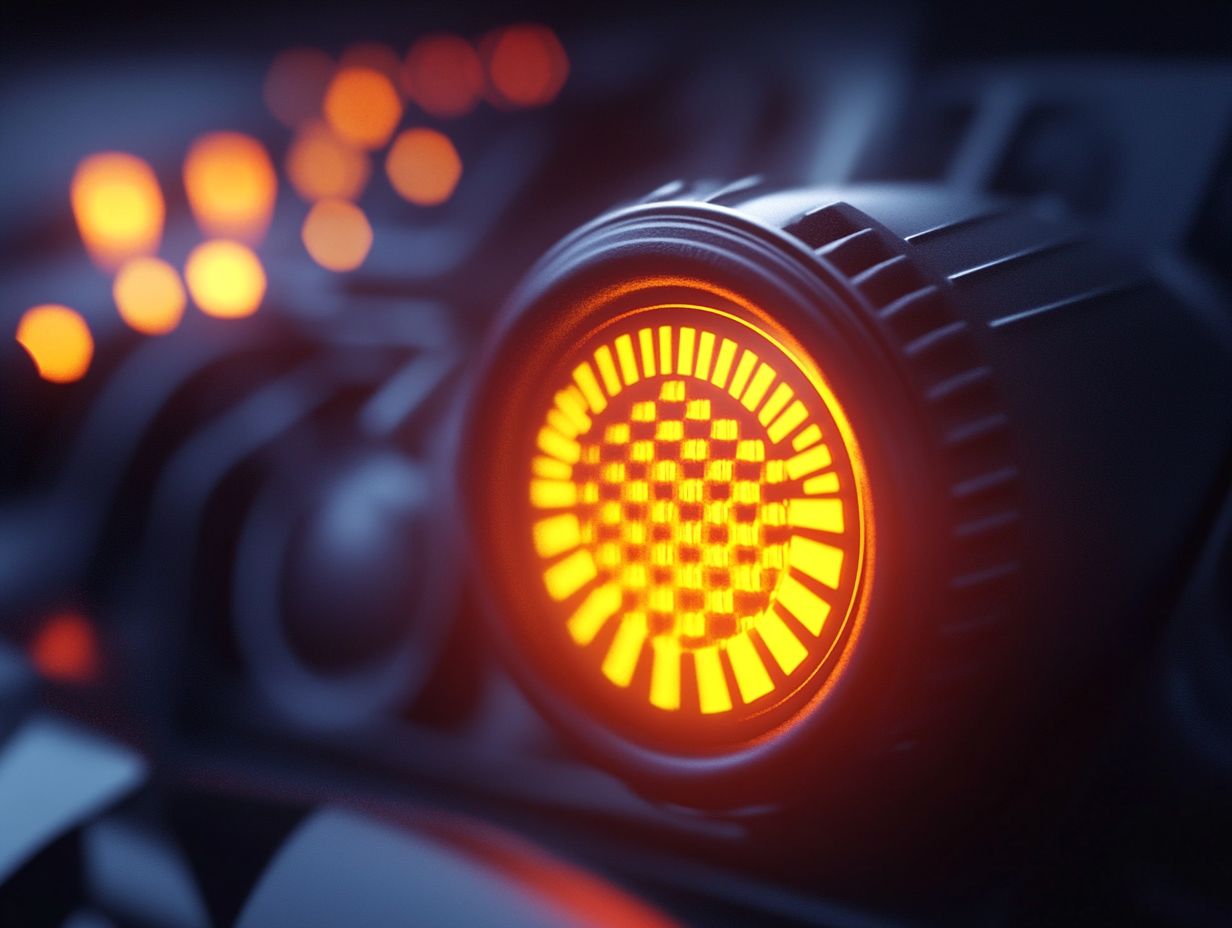
Diagnostic tools are essential for pinpointing the root cause of the Check Engine Light. They enable effective professional inspections and targeted auto service solutions.
These tools vary widely, from basic OBD-II scanners to advanced diagnostic machines that analyze your vehicle’s systems. The OBD-II scanner reads trouble codes stored in your vehicle s computer, guiding technicians toward specific areas needing attention.
For a deeper dive, sophisticated tools like multimeters and oscilloscopes measure voltage and frequency across various components. This helps isolate issues that might trigger that pesky warning light.
Some advanced diagnostic equipment connects to your vehicle’s onboard diagnostic system in real time, delivering live data analysis for better understanding of engine performance and emissions issues. By using these tools effectively, you can quickly fix issues and keep your vehicle running smoothly!
This comprehensive approach ensures your vehicle operates both efficiently and safely.
Preventive Measures to Avoid the Check Engine Light
By implementing preventive measures like regular vehicle maintenance and ensuring your gas cap is secure, you can significantly reduce the chances of the Check Engine Light coming on. This proactive approach improves engine performance and extends its lifespan.
Maintaining Regular Vehicle Maintenance
Regular vehicle maintenance is crucial for achieving optimal engine performance and preventing problems that could trigger the Check Engine Light.
When you overlook routine tasks like oil changes, you risk impairing your vehicle s smooth operation due to inadequate lubrication. This can lead to significant wear over time.
Timely spark plug replacement is equally important. Worn plugs can compromise fuel efficiency and diminish power output.
By scheduling professional inspections, you enable certified technicians to spot potential issues before they escalate. This extends your vehicle’s lifespan and enhances safety on the road, making maintenance a crucial part of responsible vehicle ownership.
Properly Filling and Tightening Gas Cap
Filling and tightening your gas cap is a powerful way to prevent air leaks. These leaks can lead to emissions problems and trigger that dreaded Check Engine Light.
When you ensure that the gas cap is secure, you’re protecting the integrity of the fuel system and optimizing overall performance. A loose or damaged cap allows fuel vapors to escape, disrupting the balance needed for efficient combustion.
This can lower your fuel economy and increase harmful emissions. By regularly inspecting your gas cap and replacing it when necessary, you can avoid costly repairs and maintain compliance with emissions regulations.
You ll be surprised by how small preventive measures can create significant benefits for your vehicle!
Frequently Asked Questions
What are the most common reasons for the check engine light to turn on?
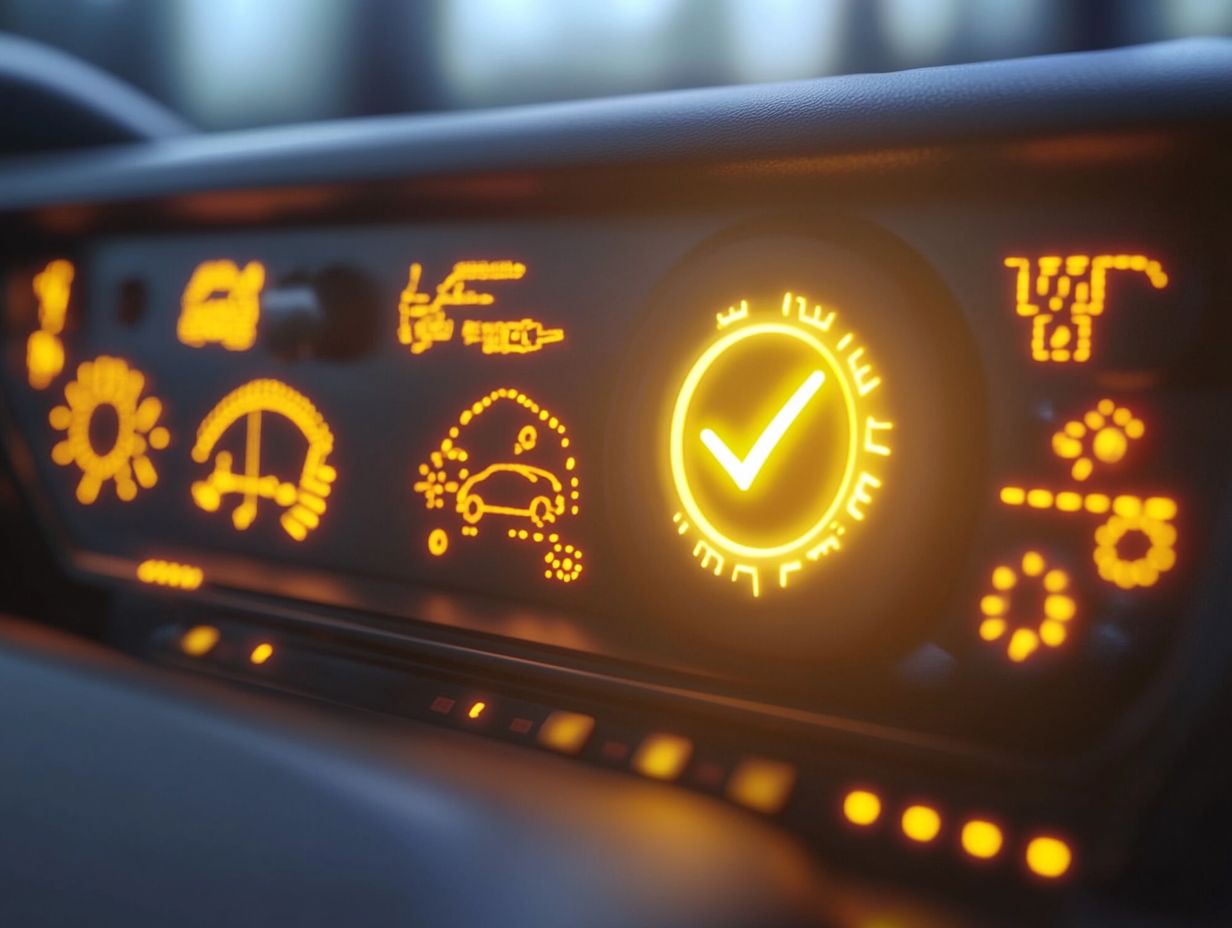
The most common reasons for the check engine light to turn on include a loose gas cap, faulty oxygen sensor, catalytic converter issues, spark plug or ignition coil problems, and a malfunctioning mass air flow sensor.
How can a loose gas cap cause the check engine light to turn on?
A loose gas cap can cause the check engine light to turn on because it affects the proper functioning of the fuel system. It can cause the fuel to evaporate, reducing fuel efficiency and triggering the emission control system, ultimately resulting in the check engine light turning on.
Key Takeaways: Regular vehicle maintenance, secure gas caps, and effective diagnostic tools are essential for optimal performance and safety. Don’t wait for problems to escalate act now!
Why is a faulty oxygen sensor a common cause of the check engine light turning on?
The oxygen sensor tracks how much oxygen isn’t burnt in the exhaust. This helps the vehicle’s computer manage fuel use. If the sensor fails, it can waste fuel and harm the environment.
What are some signs of catalytic converter issues that may trigger the check engine light?
Signs of catalytic converter issues include reduced engine performance and a sulfur-like smell. If you see a glowing red color on the converter, get it checked immediately to avoid further damage.
Can a malfunctioning mass air flow sensor cause the check engine light to turn on?
A malfunctioning mass air flow sensor can also trigger the check engine light. This sensor measures how much air enters the engine and adjusts fuel injection accordingly. If it fails, you could experience performance issues and increased emissions.
What should I do if the check engine light turns on?
If the check engine light comes on, you need to act fast! Have a qualified mechanic inspect your vehicle right away. Ignoring this warning can lead to serious damage and expensive repairs later on.



